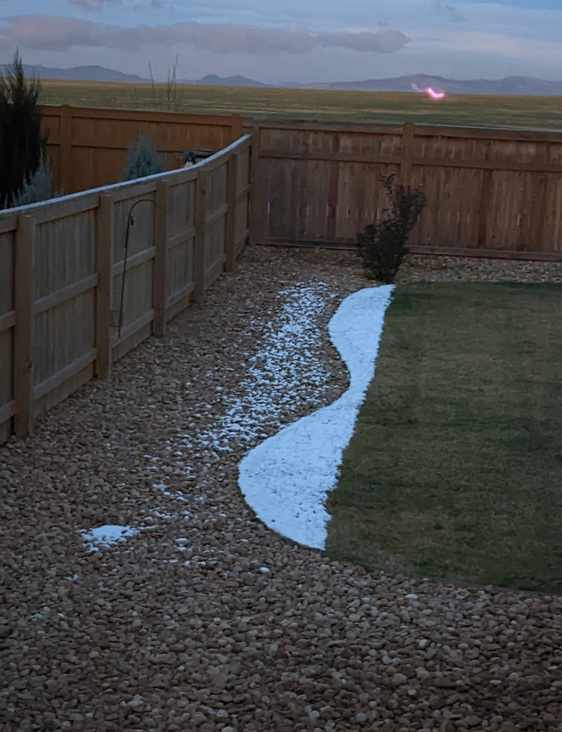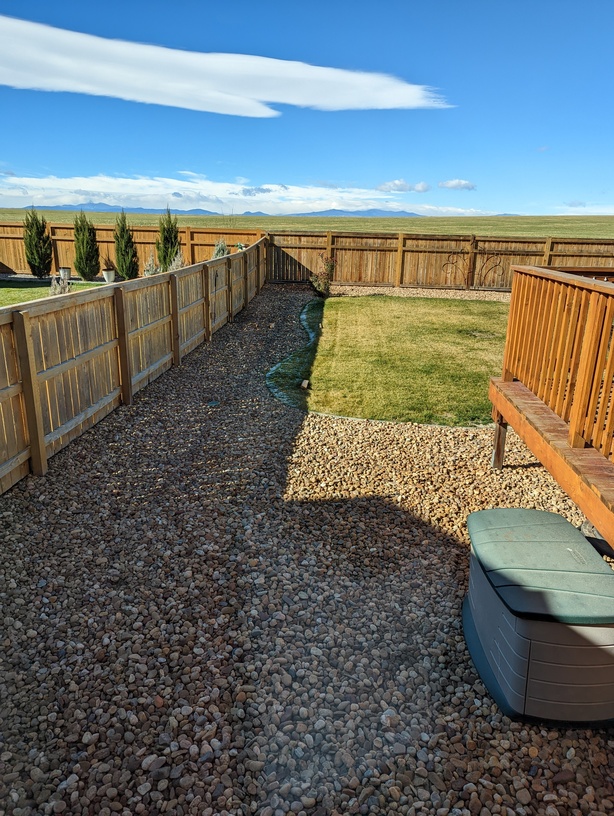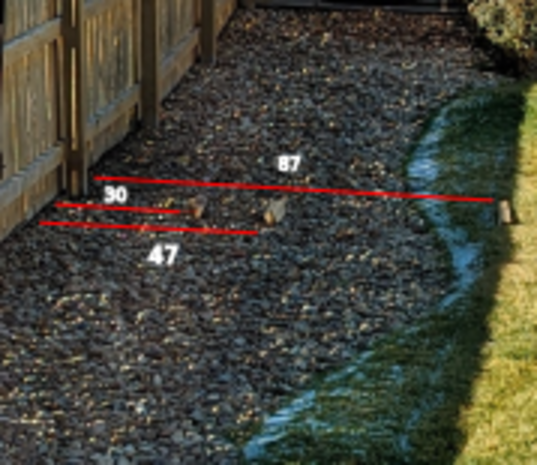The Mystery of the Melted Snow
I looked out at my backyard early in the morning of November 5th. It had snowed the morning of November 4, but the sun came out that afternoon, melting most of the snow. This is the weird arrangement of snow that I saw.

We’re looking due west in the image. South is to the left, north to the right.
The right hand snow line, in the grass, isn’t that much of a mystery. The fence’s shadow keeps the sun from melting that snow. But why did the snow closer to the fence melt? That snow is also in the fence’s shadow at all times.
A few minutes after I took the image above I put some small logs at the snow line in the grass, and at the snow lines in the gravel. The snow lines in the gravel didn’t seem as distinct when I placed the logs as they are in the image. There was a gradient from the fence to the snow on the grass.
Here are the logs and the backyard at about noon:

The fence at the left is 62 inches high. I measured 30 inches from the fence to inside log, 47 inches to middle log, 87 and 90 inches to northernmost logs.
That means 47 inches from fence to the snow line in the gravel closest to the fence in the uppermost image above.

Calculating sun’s elevation
Finding the sun’s max elevation using the height of the fence and the distance from fence to the north edge of the snow.
Here θ is the sun’s elevation above the southern horizon:
tan(θ) = 62/87 = 0.712
θ = tan-1(0.712) = 35.5°
Nominal elevation of the sun
That image of a backyard is at roughly 40.4985° north, 104.869° west. According to this web page calculator solar elevation 33.88 deg on 2022-11-05T12:00:00 Mountain Time.
I calculate an elevation from my measurements that’s only 1.62° off. Not too shabby.
That still leaves the question of why the snow melted closer to the fence.
Mystery Solved
I looked over the fence, into my neighbor’s yard. They have gravel on their side of the fence, as I have on mine. I believe that the sun heated up the gravel on the south side of the fence. Gravel on the north side, my side of the fence carried that heat by conduction, melting the snow in a gradient from fence (most melted) to grassy yard (least melted).
